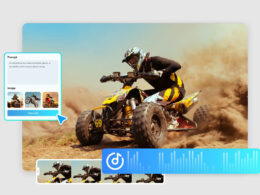Boosting User Experience: Four Advanced Features for React Applications

When it comes to modern web development, React is a powerful tool for building dynamic and interactive user interfaces. Its component-based architecture and virtual DOM make it a favorite among developers, enabling them to create seamless web applications.
However, as the demands of modern web users continue to grow, it’s essential to explore advanced features that can elevate the user experience to the next level.
In this article, we’ll take a look at four ideas for advanced features to add to React applications.
The React Advantage
React’s popularity stems from its ability to simplify the development of complex user interfaces by breaking them down into manageable components. This component-based approach promotes code reusability, maintainability, and scalability.
With a rich ecosystem of libraries and tools, React allows developers to build powerful and responsive applications quickly.
However, while React provides a solid foundation, there are situations where additional features and integrations can significantly improve the user experience. Let’s explore some of these advanced features:
1. Real-time Collaboration
Collaborative applications have become increasingly popular, and users now expect the ability to collaborate seamlessly in real-time. Adding real-time collaboration features to your React application can be a game-changer.
For instance, imagine users simultaneously editing documents, spreadsheets, or other content in your application without the need for constant page refreshes.
One way to achieve this is by integrating collaborative editing tools into your React application. These tools offer collaborative editing capabilities, allowing multiple users to work together on the same document in real-time.
This type of integration can make your application more engaging and productive, making it ideal for things like collaborative document editing platforms, project management tools, and chat apps.
2. Rich Text Editing
Enhancing the user experience often involves providing users with more control over the content they create and consume. Rich text editors are a critical component for achieving this goal.
The TinyMCE React integration offers a sophisticated and customizable solution for rich text editing. Its intuitive interface enables users to format text, insert images and videos, and create visually appealing content effortlessly.
To integrate TinyMCE with React, you can make use of the “tinymce-react” package, which simplifies the process. This package allows you to embed the TinyMCE editor seamlessly into your React components, giving you full control over its configuration and behavior.
Whether you’re building a content management system, a blogging platform, or an email client, TinyMCE’s React integration can empower your users to create and edit content with ease.
3. Progressive Web App (PWA) Features
As mobile usage continues to rise across the globe, delivering a responsive and seamless experience on both desktop and mobile devices is paramount.
Progressive Web Apps (PWAs) have gained popularity for their ability to provide native app-like experiences in a web browser. They offer features like offline access, push notifications, and smooth animations.
Integrating PWA features into your React application can significantly improve the user experience. Users can install your web app on their devices, receive notifications even when the app is not open, and access content offline.
These features enhance user engagement and retention, making your application more competitive in the market.
4. Responsive Design and Mobile Optimization
In today’s mobile-first world, responsive design and mobile optimization are no longer optional — they’re essential.
Users expect your React application to adapt seamlessly to various screen sizes and orientations, and failing to provide a smooth mobile experience can lead to high bounce rates and user dissatisfaction.
To ensure mobile optimization, leverage React’s capabilities for responsive design. Use CSS media queries and React libraries like “react-responsive” to create fluid and adaptive layouts that seamlessly adjust to different screen sizes and orientations.
This approach not only enhances the user experience but also ensures that your React application remains competitive and accessible in an increasingly mobile-centric world.
Conclusion
React has revolutionized web development by providing a robust framework for building dynamic user interfaces.
However, to truly excel in a market oversaturated with apps, developers must go beyond the basics and incorporate advanced features that enhance the user experience.
By embracing these advanced features and considering the needs and expectations of modern web users, especially those on mobile devices, you can take your React application to new heights of functionality and user experience.
So, whether you’re building a content platform, a productivity tool, or a social networking site, remember that going the extra mile with advanced features can make all the difference in user satisfaction and success.
- Avoid Spam Calls: Caller ID Apps Like Truecaller - May 19, 2024
- Streamline Data Access with JavaScript’s for-in Loop - May 19, 2024
- Master Your Build: Essential Java Build Tools - May 19, 2024








